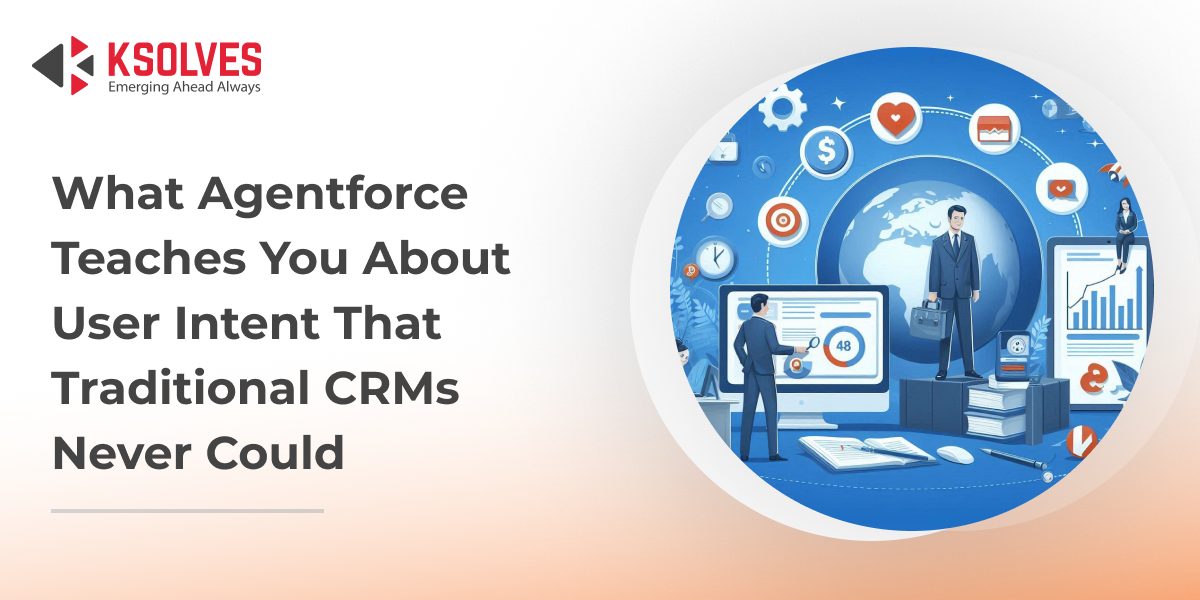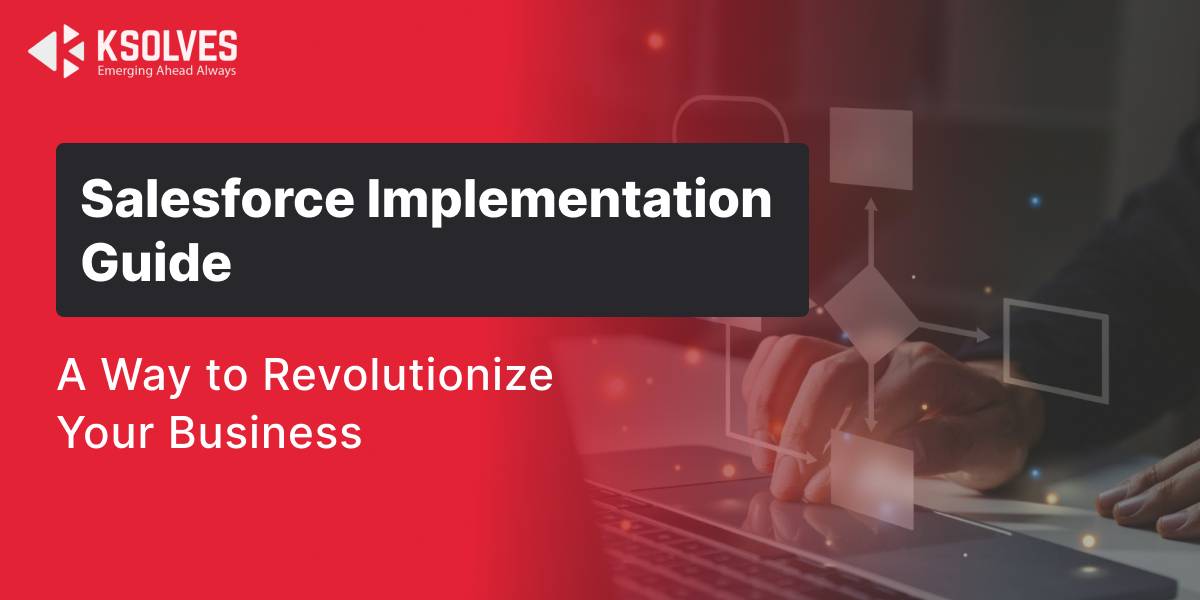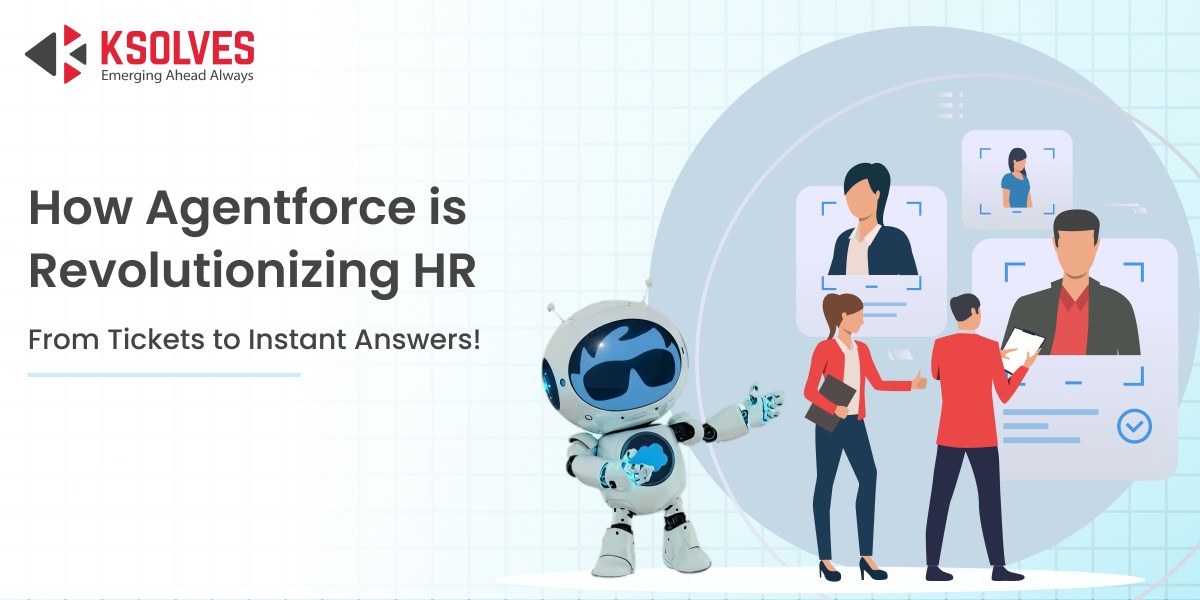What Agentforce Reveals About User Intent That CRMs Miss
Agentforce
5 MIN READ
May 27, 2025
![]()

Understanding what your users really want is the key to delivering great experiences, building loyalty, and driving growth. Traditional Customer Relationship Management (CRM) systems have long been the go-to for tracking customer data and managing interactions. But while CRMs are effective at storing contact details, logging form submissions, and managing sales pipelines, they often fall short in revealing the true intent behind user actions.
That’s where Agentforce comes in. It’s a powerful AI-driven platform that reimagines how businesses capture and interpret user intent in real time. Unlike static CRM systems, Agentforce leverages intelligent agents that continuously learn, act, and respond based on user behavior, preferences, and context.
In this blog, we’ll explore the limitations of conventional CRM logic, dive into how Agentforce uses AI agents to uncover real-time intent, and showcase real-world use cases where this next-gen approach leads to faster decisions, better engagement, and higher ROI.
The Challenge: Hidden User Intent in CRM Data
Every enterprise knows the scenario: you have plenty of data in your CRM that includes lead scores, meeting notes, support tickets, and form fill details. But you still struggle to read the customer’s mind. A CRM can tell you what actions a user took (e.g. they filled out a demo request form or moved from prospect to qualified lead), but it rarely tells you why. The why is user intent – the underlying motivation or goal the user has.
Traditional CRMs capture only explicit signals of interest. For example, a contact record might show that a user clicked on pricing and downloaded a whitepaper. From this, your team infers the user is interested in your product. But is the user’s intent to compare prices, to solve a specific pain point, or just to gather market research? CRM data alone doesn’t answer these deeper questions. Form fills, sales stages, and static contact fields are proxies for intent, not the real thing. They’re like useful but lacking context.
The limitation is not due to lack of data, but the static nature of CRM data. CRMs are largely reactive: they store information that users or employees input manually or via simple automations. A lot of nuance gets lost. Important intent clues, like the urgency in a customer’s voice during a support call, or the sequence of questions a prospect asks in a chat, may never make it into a structured CRM field. As a result, businesses relying solely on CRM records often miss out on why customers behave a certain way, leading to missed opportunities or misaligned follow-ups.
How Can We Reveal the Intent Behind User Actions?
The answer lies in moving from static records to dynamic conversations. Agentforce makes this possible by equipping organizations with AI “agents” that engage users in natural language and carry out tasks autonomously. Instead of just logging data after the fact, Agentforce agents actively interact with users. They ask questions, answer queries, and handle requests, all while learning about the user’s goals in the process.
This conversational ability is a game changer for understanding user intent. Instead of relying on a web form’s checkboxes or waiting for a sales rep to log notes, you have an AI agent actively listening to the user’s requests and questions.
Every utterance from the user provides clues about their true needs. Are they asking detailed technical questions (signaling a research intent)? Are they repeatedly comparing features (signaling they are weighing options)? Are they venting frustrations about a current solution (signaling pain points and urgency)? An Agentforce agent can pick up on all these subtle cues in real time.
Also Read: Salesforce Agentforce vs. Traditional Support
How Traditional CRMs Miss the Intent Picture
To appreciate the difference, let’s contrast how a traditional CRM and an AI agent handle user data:
- Data Collection in CRM: Conventional CRMs collect explicit, structured data. This includes things like contact details, company info, lead source, and activities logged. CRMs might track when a user visits a webpage or opens an email, but these are isolated events. For intent, CRMs lean on proxies: a filled-out form might indicate interest, a lead score increase might indicate buying intent.
However, these signals are limited. A static model might give “10 points for an email open,” but that doesn’t truly confirm interest. It’s a guess. The CRM simply lacks richer context behind those actions.
- Data Collection with AI Agents: An Agentforce AI agent gathers both explicit and implicit data through interaction. When a user engages in a chat or voice conversation with the agent, every question they ask, every command they give, and even the timing or frequency of their requests become data points. Instead of just “User clicked button X,” you get transcripts of what the user actually said. Moreover, these agents tap into real-time usage data.
For instance, an Agentforce sales assistant could notice a user navigating through certain features in your software and then asking the agent how to achieve a goal using those features. This reveals exactly what outcome the user is aiming for. This dynamic stream of data (real-time engagement, behavioral patterns, and AI-derived insights) goes far beyond the demographics and past actions a CRM typically records.
Why Agentforce Wins: Three Key Advantages Over Traditional CRMs
Agentforce brings a smarter, more responsive layer to customer engagement that traditional CRMs simply can’t match. Let’s talk about key advantages of Agentforce over traditional CRMs:
1. Interpreting Behavior: Rules vs. Real Understanding
Collecting data is only half the battle. The real value lies in interpreting that data to understand what users really want. Traditional CRMs rely heavily on rule-based logic and manual interpretation. For instance, a CRM might flag a lead as high-intent if they visit the pricing page twice and have a title like “Director.” Or a support agent might skim a customer’s history and guess they’re frustrated. These methods are rigid or subjective and often inaccurate.
Agentforce, powered by AI, does it differently. Instead of relying on pre-set rules, Agentforce agents use natural language understanding and machine learning to interpret behavior in real time. They learn from language, context, and patterns in user actions. For example, if a user says, “I’m not sure this will work for me because we have a complex workflow,” an Agentforce agent recognizes both the surface question and the underlying concern. It can respond accordingly, reassuring the user while offering a relevant solution.
Unlike traditional CRMs, Agentforce agents remember previous conversations. If a user mentioned a goal earlier, the agent can refer back to it later. This context awareness allows the agent to be more helpful and precise. Over time, the agent learns from multiple interactions and begins to spot patterns. For example, it may notice that users asking about integration X often have goal Y. It can use this insight to personalize future conversations.
2. Automation: Acting on Intent in Real Time
Understanding intent is powerful—but acting on it instantly is what really drives results. Traditional CRMs use automation based on defined triggers. A lead score goes above 80? Assign a salesperson. A support form is submitted? Create a ticket. These workflows are useful but they respond after something has happened.
Agentforce changes the game. Its AI agents can interpret user intent on the spot and take immediate action. If a user says, “This feature isn’t working for me,” the agent doesn’t just log the issue. It might run diagnostics, guide the user to a fix, or escalate the problem, all without waiting for human intervention.
This real-time automation feels like a conversation, not a workflow. A sales agent could assess needs, generate a tailored proposal, and schedule a meeting within one seamless interaction. No CRM rules or follow-up emails needed. And as the agent works, it updates the CRM behind the scenes, keeping records complete without disrupting the flow.
Modern CRMs may offer AI-powered suggestions, but they’re mostly advisory. In contrast, Agentforce agents act. They predict and respond to user needs in real time, leading to faster resolution, better engagement, and less manual work.
3. Gaining Richer Insights into User Preferences and Goals
AI agents also provide a major advantage in insight generation. Every conversation is a learning opportunity. Agentforce agents uncover not just what users do—but what they want to do and what’s holding them back.
This is gold for your business. You might discover that 30% of users are looking for a pricing option you don’t feature, or that integration with a legacy system is a key factor in buying decisions. These needs won’t show up in static CRM fields but they emerge clearly in AI-driven conversations.
Agentforce can summarize interactions, flag common themes, and feed this intelligence into your analytics. Over time, it builds a detailed, evolving profile of each customer: what they care about, what problems they face, and what solutions matter to them. This helps your team deliver more relevant follow-ups and create better experiences.
Traditional CRMs can’t provide this depth of insight without significant manual input. But with AI agents, it happens automatically.
The New Framework: CRM + AI Agents for Intent-Driven Engagement
Agentforce doesn’t replace your CRM but it enhances it. Think of the CRM as your system of record, and Agentforce as your system of engagement. The agent learns from each interaction, updates the CRM with valuable insights, and gets smarter with every use.
This approach transforms CRM from a static database into a dynamic, conversational platform. Experts predict that natural language interfaces will soon become the primary way we interact with CRMs. Agentforce is already heading in that direction, making CRM functionality accessible through intelligent conversations.
If your team is still relying solely on static CRM data, it’s time to rethink. AI agents like those powered by Agentforce help you:
- Understand user intent in real time
- Automate actions as conversations unfold
- Learn continuously from every interaction
- Personalize experiences at scale
Conclusion: Bring AI-Powered Intelligence to Your CRM
CRMs are great at storing data but they don’t truly understand your customers. Agentforce changes that by interpreting intent, learning from every interaction, and acting in real time. It’s how you move from reactive service to proactive, personalized engagement.
If you’re ready to take that next step, Ksolves can help. As an Agentforce consulting service provider with deep AI and CRM expertise, we’ll guide you through setup, customization, and growth, so your Agentforce-powered solution delivers real impact, fast.
Let’s build smarter customer experiences together. Contact us today!
![]()







Author
Share with